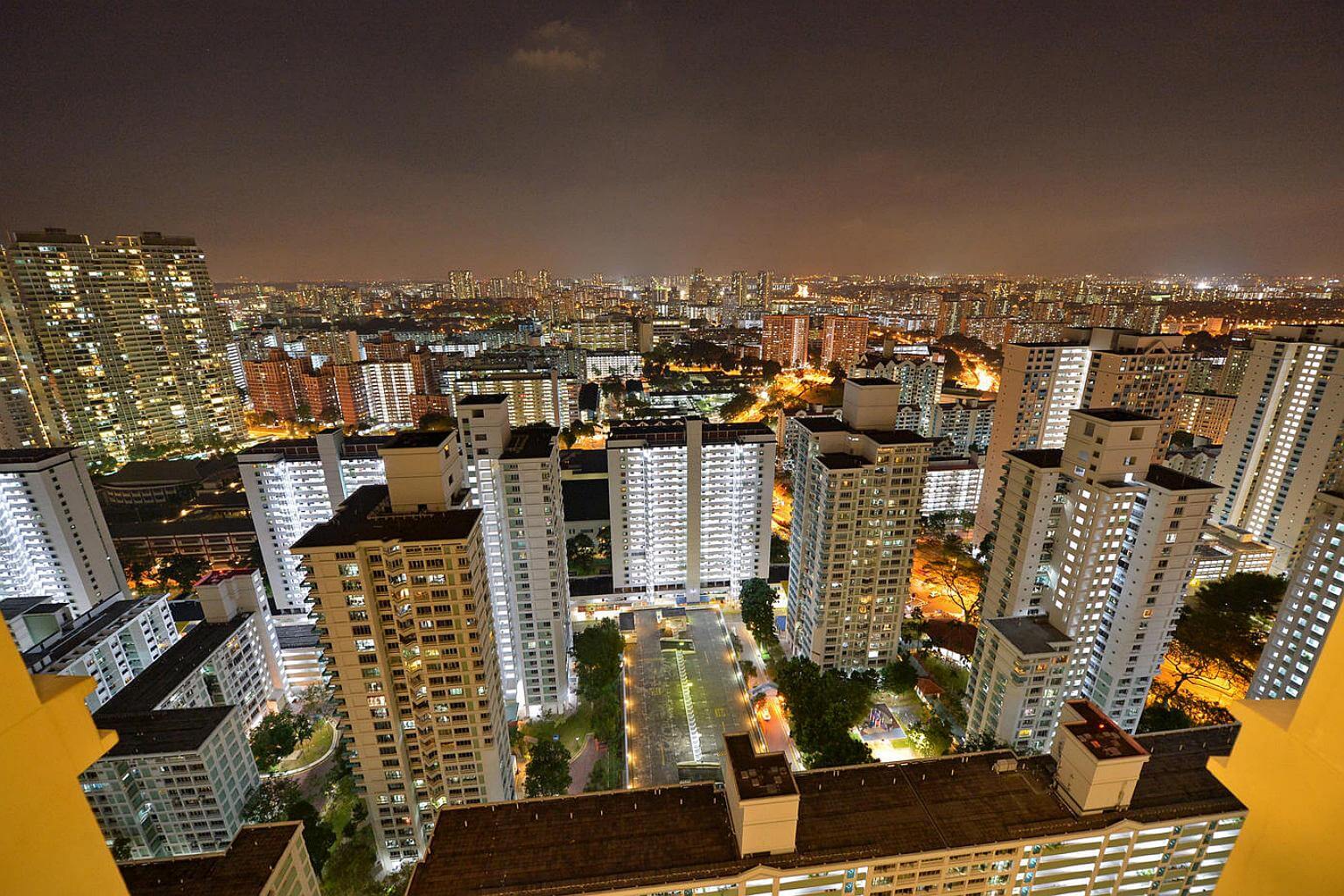Singaporeans using less electricity, water
Experts credit increased use of energy-efficient appliances, but say more needs to be done
Sign up now: Get ST's newsletters delivered to your inbox

A view of the high-rise HDB flats in Toa Payoh taken at night.
PHOTO: ST FILE
Follow topic:
People here may be armed with mobile phones, tablets and cameras, but they are using less electricity now when compared with a decade ago - a trend similar to Singapore's water consumption pattern.
Figures from the Energy Market Authority showed that last year, each household used a monthly average of 468.4kWh of electricity. This is down from the 469.0kWh monthly average in 2006.
The decline could be due to smaller households - there were just 3.4 people in each household last year. About a decade ago, it was 3.6.
But estimated per capita consumption rates also reflect a similar downward trend. In 2006, each person used a monthly average of 115.7kWh of electricity at home. This dropped to 108.7kWh last year, according to calculations made by Mr Allan Loi, energy analyst at the National University of Singapore's Energy Studies Institute.
Energy experts said the decline could be due to more people adopting household appliances that have become more energy efficient. This includes air-conditioners and refrigerators, traditionally among the biggest guzzlers of electricity at home.
"Energy-saving appliances compensate for the electrical consumption of computers, electronic devices and video screens," said Mr Teo Chor Kok, council member at The Institution of Engineers, Singapore.
The Government has schemes to steer consumers towards making green purchases. In 2008, the National Environment Agency (NEA) started the Mandatory Energy Labelling scheme, which requires appliances like air-conditioners and clothes dryers to be labelled according to energy efficiency. The system awards a "five-tick" rating to the most energy-efficient ones, and a "one-tick" rating to the least.
In 2011, a new Minimum Energy Performance Standards scheme made the labelling scheme more robust. NEA started prohibiting the sale of electrical appliances that did not meet specified minimum energy efficiency standards. The result was that 85 per cent of the air conditioners sold in 2012 had three ticks and above, compared with only 50 per cent in 2008.
Experts said now that the Paris climate pact has come into force, Singapore should tap technology to boost energy efficiency, and ramp up educational outreach to get people to use even less electricity. The global pact seeks to limit global warming to under 2 deg C above pre-industrial levels, and countries, including Singapore, have committed to implementing measures to reduce greenhouse gas emissions.
Singapore's climate policy is based on three pillars - fuel switching, increasing energy efficiency, and developing renewable energy, said Dr Luke Peh, head of the facilities and events management programme at SIM University. Most of Singapore's electricity is already generated by natural gas, the cleanest form of fossil fuel.
But there are limitations, such as the lack of suitable sites, to tapping renewable energy sources. "There should be more efforts to leverage technology to be more energy efficient," said Dr Peh.
More homes near train stops
By 2030, Singapore plans to have four out of five households within a 10-minute walk of a train station. And the Republic is getting there - as of last year, this stood at three out of five (60 per cent) households.
In 2014, the figure was 58.5 per cent.
The 2030 target is just one of several Singapore has set for itself under the Sustainable Singapore Blueprint, which charts ways for the country to develop in a sustainable, environmentally-friendly way.
It has five focus areas: developing smart, eco-friendly towns; going car-lite; moving towards a zero-waste nation; becoming a leading green economy; and nurturing an active, gracious community where people are environmentally conscious and do not litter, for example. The blueprint was launched two years ago.
Yesterday, Minister for the Environment and Water Resources Masagos Zulkifli gave an update on how the country has fared so far.
"I'm glad that the Paris Agreement came into force and that every country in the world must now do their best to make sure to reduce their emissions," he said on the sidelines of the Clean and Green Singapore Carnival, an event to promote environmental awareness.
"For Singapore, we have been making incremental gains through our Sustainable Singapore Blueprint."
Other updates given by his ministry include that for the domestic recycling rate, which last year held steady at 19 per cent, the same as in 2014. In 2013, this was 20 per cent. Singapore's target by 2030 is a rate of 30 per cent.
"It is impossible for the Government to achieve emission targets on our own. We can make regulations, pass laws, but it is more effective if everyone pitches in," said Mr Masagos.

